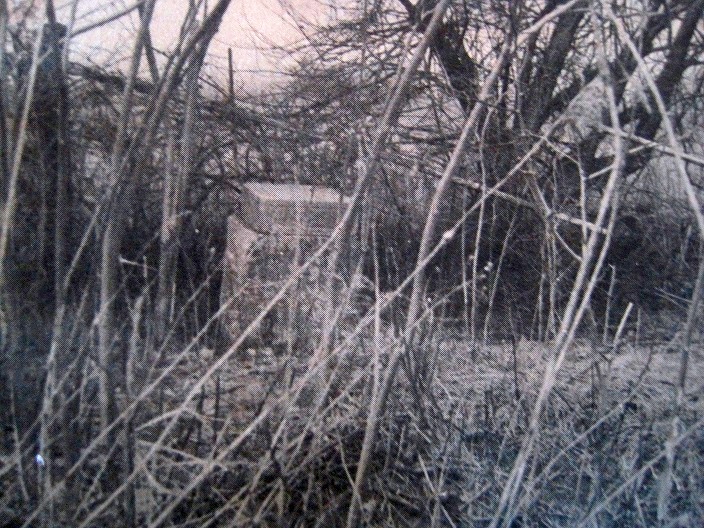LAW’S SCHOOL S.S. #1, PELHAM
2502 Effingham Road, Lot 6, Concession 2
[Peham Historical Calendar 1985]
Nestled among some tall trees, on what was once called the Pelham Stone Road, sits a fine brick structure. A remnant of the education of the past, it is now a private home. It was used first as a township school, then for part of a township school area, and was finally closed in June 1965, with the advent of the Niagara South Board of Education, Mrs. Elaine Cuffe was the last teacher principal. Mr. and Mrs. Ralph Roland (Patricia) purchased this property in 1966, and have put in many improvements, but they have kept the exterior facade virtually intact
A record book, the property of Mr. and Mrs. Harold Roland, yields much information about the first school. On the first page, D.D’Everardo signs his name, adding “T. Supt., C.S.” This stands for “Township Superintendent, Common School.”
The land for the school was donated by Nicholas Oille, and the log schoolhouse was erected in 1832, twenty-four feet square. As the old photo shows, it was to the west of the Oille-Sanderson house, now the home of Mr.and Mrs. John Gilmore. The second school, made of brick, was built to the east of the log school, but it burned down, and was cleared away. A third school, also of brick, was built in 1906, and burned down in 1913 or 1914. The foundation of the fourth school was built around the foundation of the third one. While it was being constructed in 1916 and 1917, a house on the Sanderson property was used as a school. When the house was no longer needed, it was moved to Sixteen Road. At one time, there was a double cistern at the back of the school, which was called a “water font.” The water was purified as it passed from one cistern to the other.
Judging from the description of their schools written by pupils in a scrapbook, we glean the idea that they were indeed spartan by modern standards. The equipment consisted partly of a dunce cap and a birch rod. Only the fourth and final school was decorated in warmer tones. Electricity was installed around 1939. The school yard was well landscaped, and awards in the Welland County Beautification Contest were won four times between 1926 and 1930, as depicted on a wooden shield left in the school building.
The earliest mention of trustees was made on January 14, 1845, when George Oille (Chairman), James Disher (Secretary), and Joseph Disher, John H. Oille, and John Snure (trustees) were in office. The first teacher in these records was Mary A, Hershey engaged on May 1 1845. Later on, another teacher was Edward Michener who met Mary Roland in the district and married her. Eventually, they became the parents of Rt. Hon. Roland Michener, our former Governor-General.
Several teachers were hired before one was listed as having “qualifications.” When dollars and cents replaced the pound sterling, the cost of board along with the salary was first mentioned. At times, teachers were hired for one or two months, and then dismissed. Another item of interest was that male teachers were paid double the salary of female teachers. So much for equal pay for equal work!
The school funds for 1844 were thirteen pounds, nine shillings and ten pence, but by 1851, they had risen to eighty-four pounds, seven shillings and nine pence. On January 10, 1855, the teacher’s salary was raised a certain amount per “schollar” and henceforth only those who sent children to school were to be taxed. In addition, each “schollar” was to furnish one-quarter cord of good wood which was to be measured by the teacher and a receipt issued, and all this to be done by February 11, 1855. The first mention of the Clergy Reserve Fund was made on May 3, 1881. This was for twelve dollars and sixteen cents. By January 28, 1864, the amount had risen to thirty-three dollars and sixty one cents, which was paid in two instalments.
Former prices are interesting. Can you recall the time when you paid three dollars and fifty cents for a cord of wood, or forty cents for a broom and a stovepipe, or one dollar and fifteen cents for glass, nails, putty and repairs? This was the situation in 1867, the year of Confederation.
In the early days, Law’s School accommodated scholars between the ages of five and sixteen. The average attendance between the years 1845 and 1857 was forty-four, the highest enrolment being fifty in 1849. Early in its history a design for a corporate seal was devised and accepted, its description reads as follows: “brass, round, one inch in diameter; Number One on the centre; PELHAM in the semi-circle above; S.S. In the semi-circle below.”
The highways and byways of Pelham make for interesting exploring. Next time you travel the Effingham Road, watch for the place where Roland Road meets it. There is the area where many of our early settlers were introduced to “Education.”
Marjorie L. Jenter
 Subscribe..
Subscribe..
